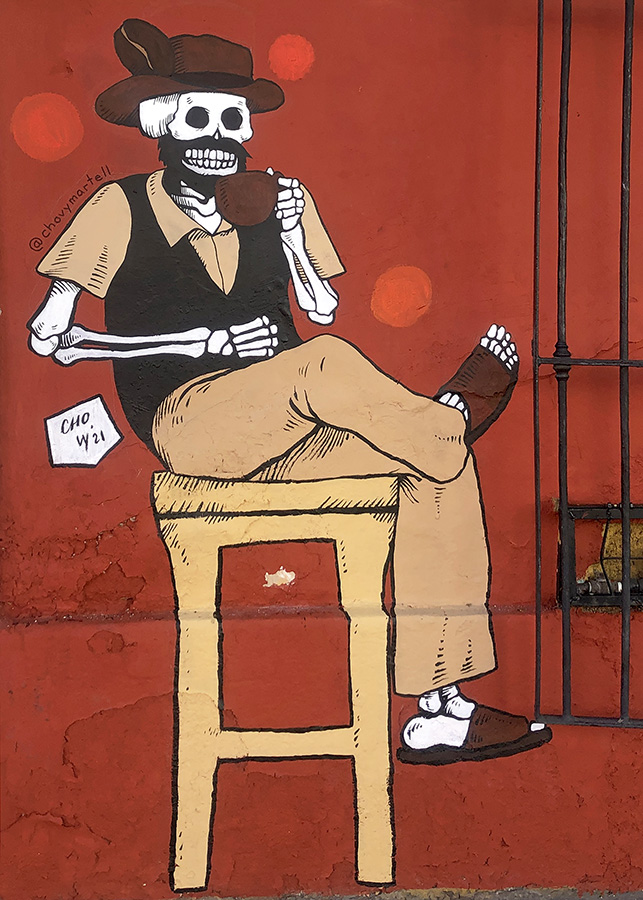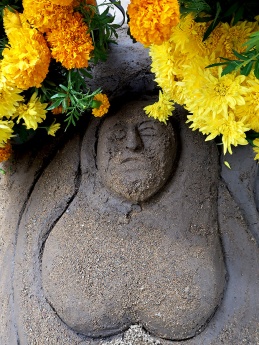The evening of October 31, I heard the unmistakable sounds of a procession coming down the street — but not the raucous cacophony of a muerteada which, given the date, I was expecting. No, this was the slow dirge-like and repetitive hymn of a religious procession. Needless to say, I grabbed my camera, keys, and cubreboca (mask) and headed out the door. The Catholic church has dedicated the month of October to honor the Virgin Mary with the recitation of the Holy Rosary. This being the last Sunday of October, María traveled through the streets of Barrio de Jalatlaco through the generous mayordomía (stewardship) of the families Robles Tamayo and García Robles.
Upon her return to Templo de San Matías Jalatlaco, she was greeted by a less than solemn scene of Día de Muertos revelers in costumes and face paint, no doubt looking for a muerteada (aka, comparsa). According to the book, Day of the Dead: When Two Worlds Meet in Oaxaca, the muerteada allows the dead “to ‘occupy’ a living body, either a muerteada participant or an audience member, for a time, and therefore enjoy the entertainment directly rather than vicariously.” I suspect for some, it was just an excuse to party.
However, a muerteada did come to my neighborhood the following night. Again, I grabbed camera, keys, and cubreboca and ventured out to check it out. The craziness was only just getting started and would undoubtedly go on most of the night. Besides, not even half the people were wearing masks, so, after twenty minutes and twenty plus photos, I went home.
The sacred and profane that is Mexico.



































































































































 Mexican Peso Converter
Mexican Peso Converter